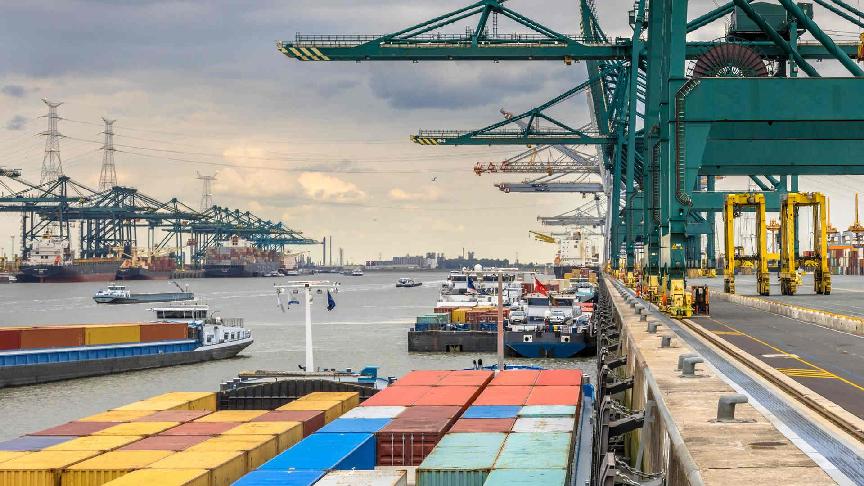1 May 2024 (Lloyd's List) - HOW long shipping disruptions at the Panama Canal last will come down to what caused the historic drought. If it is climate change, it could be a longer-term problem. If it is El Niño, it will be transitory, as in the case of past transit restrictions.
A new study released Wednesday by scientists in Panama, the Netherlands, Sweden and the UK points to the transitory scenario.
The caveat is that fresh-water demand from Panama’s population, as well as the international shipping industry, is higher than it used to be. Each transit via the larger neopanamax locks, which debuted in 2016, requires around four times as much water as each transit through the original panamax locks.
This implies that there will be recurring canal restrictions in future El Niño years, barring dramatic changes to Panama’s water supply.
No evidence attributable to climate change
The newly released study, conducted by the research consortium World Weather Attribution, found that low Panama Canal water levels are due to “increasing demand exacerbated by El Niño”.
“Since 1950, five of the seven driest years for the Panama Canal watershed have occurred during major El Niño events,” it said, noting that El Niño occurrences caused shipping disruptions at the canal in 1998 and 2016, prior to the current disruptions.
Transit restrictions in 2023-2024 were caused by a precipitation deficit in Panama’s May-December 2023 rainy season. Last year was the country’s third driest on record.
The new study found “no evidence that the reduced rainy precipitation in this region is attributable to anthropogenic climate change”.
Water availability is driven not just by precipitation, but also “by changes in evapotranspiration, which reduces the amount of effective rainfall”. Global warming trends increase the drying effect.
However, the study noted that “evapotranspiration in Panama is mainly driven by wind speed, humidity and cloud cover, which is in contrast to most other regions in the world, where temperature is a key driver”.
“There is some evidence of drying, especially in stations bordering the [Gatun] lake, but other stations in the study area show a wettening,” said World Weather Attribution, which asserted that the data does “not consistently exhibit a drying trend”.
Gatun Lake water levels slightly improve
The Panama Canal Authority (ACP) currently forecasts a return to a typical rainy season, for locks operations to return to normal by 2025, and for transit slots to progressively increase through the rest of this year.
The current water depth in the Gatun Lake is 24.5 m, up only slightly in recent weeks, but well above lows recorded in the second half of last year. The next two months will be a crucial indicator of whether the optimistic recovery scenario is correct. The ACP projects Gatun Lake water depth will increase by 0.5 m by July 1, bringing it back to levels last seen in April 2023.
Neopanamax locks effect on water consumption
Panama Canal disruptions caused by El Niño have happened before, but the situation is inherently different this time – and it will be in the future – because the canal system has changed, courtesy of the neopanamax locks.
When the neopanamax locks project was first conceived in the 2000s, the target market was larger containerships carrying Asian exports to the US east and gulf coasts. The US energy sector had yet to be transformed by fracking.
The subsequent surge in US energy production turned America into the world’s largest exporter of liquefied natural gas and liquefied petroleum gas. Suddenly, the ACP had a much larger total addressable market for its neopanamax locks than it originally thought: not just larger containerships heading east but LNG carriers and LPG carriers heading west from the US Gulf to Asia.
The demand for the new neopanamax locks turned out to be very high, which caused Panama Canal water consumption to surge.
During a roundtable discussion with journalists on Sept. 12, 2023, ACP administrator Ricuarte Vasquez Morales explained, “The volume of water that each transit requires is independent of the vessel size. It depends more on which locks are used.
“So, when we have the neopanamax locks, it uses ‘x’ volume of water, which is about 200m gallons of water [for each transit]. And then in the Panamax locks, we use about 50m gallons of fresh water in every lockage to transit a vessel.”
In FY 2023, which ran from October 2022-September 2023, 3,623 oceangoing commercial vessels transited the neopanamax locks and 9,015 vessels transited the Panamax locks.
Using the ACP administrator’s ballpark gallons-per-transit math, that equates to a total water usage of around 1.175trn gallons in FY 2023, 62% for neopanamax transits and 38% for the panamax transits, even though there were 2.5 times as many panamax transits as neopanamax transits.
In FY 2015, prior to the debut of the neopanamax locks, there were 12,383 oceangoing commercial vessel transits via the panamax locks, implying consumption of around 619bn gallons of water. The post-canal-expansion water consumption in FY 2023 was 90% higher.
A more apples-to-apples comparison is between FY 2011 and FY 2022, when oceangoing commercial vessel transits were roughly equal (12,987 in FY 2011 versus 13,003 in FY 2022). Even so, the implied water consumption in FY 2022, as a result of the neopanamax locks usage, was 84% higher than in FY 2011.







